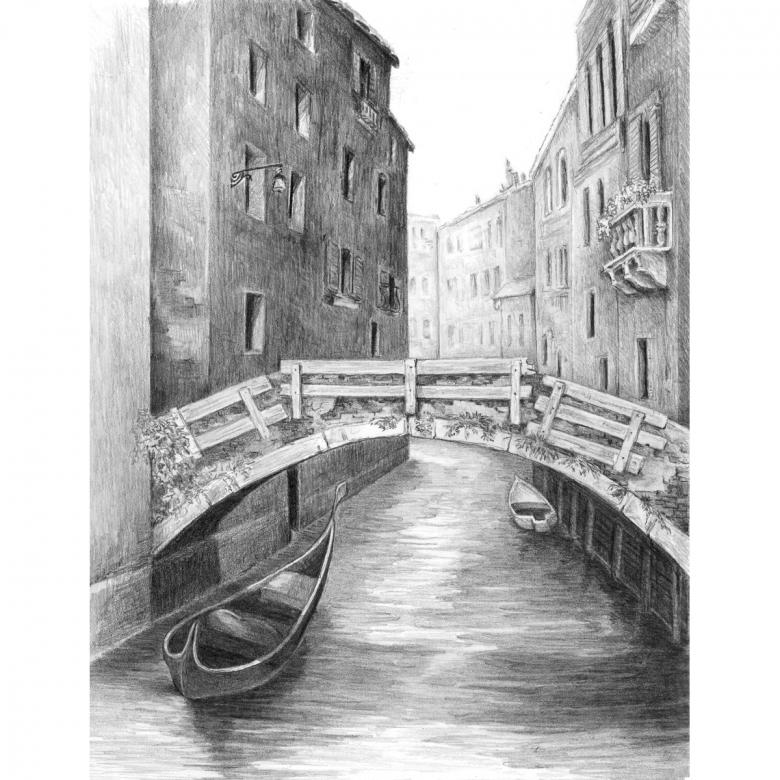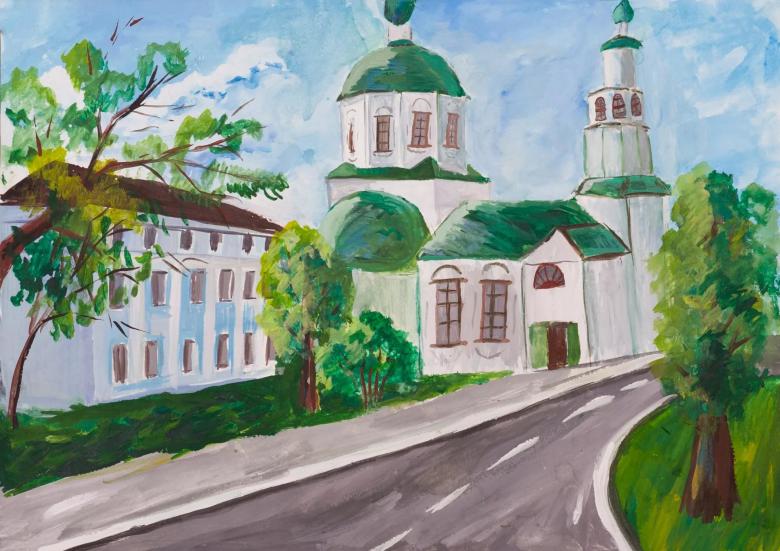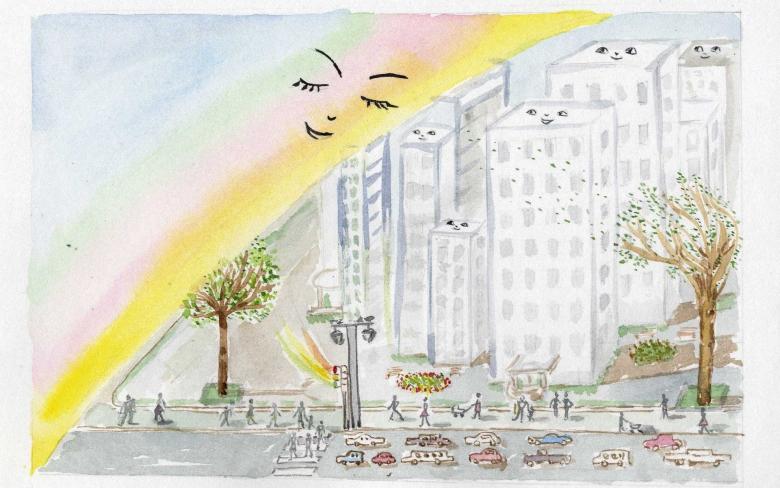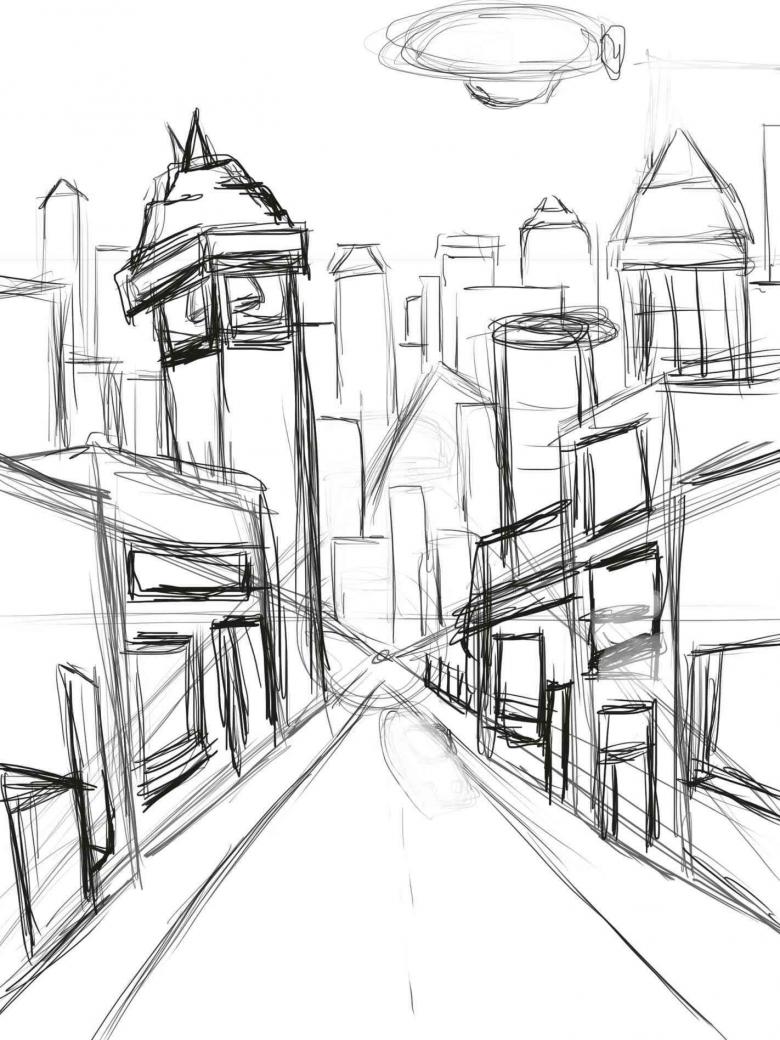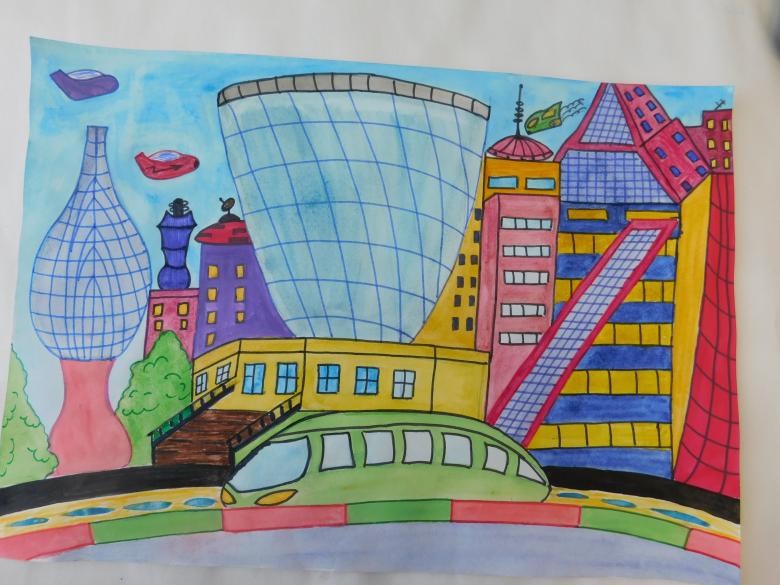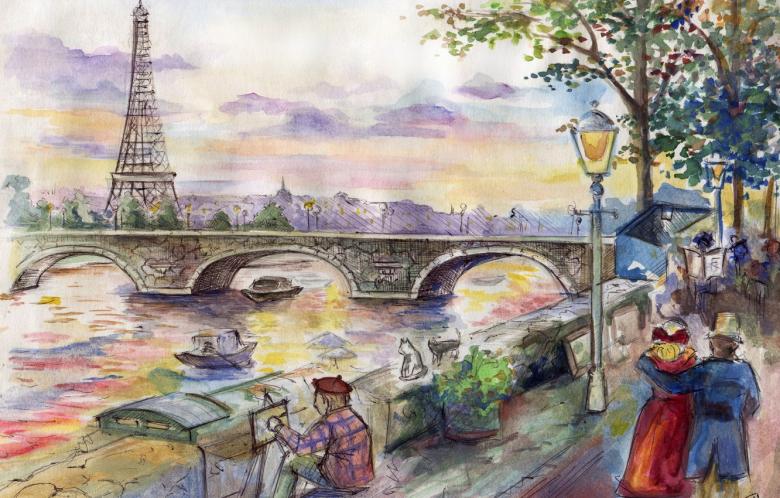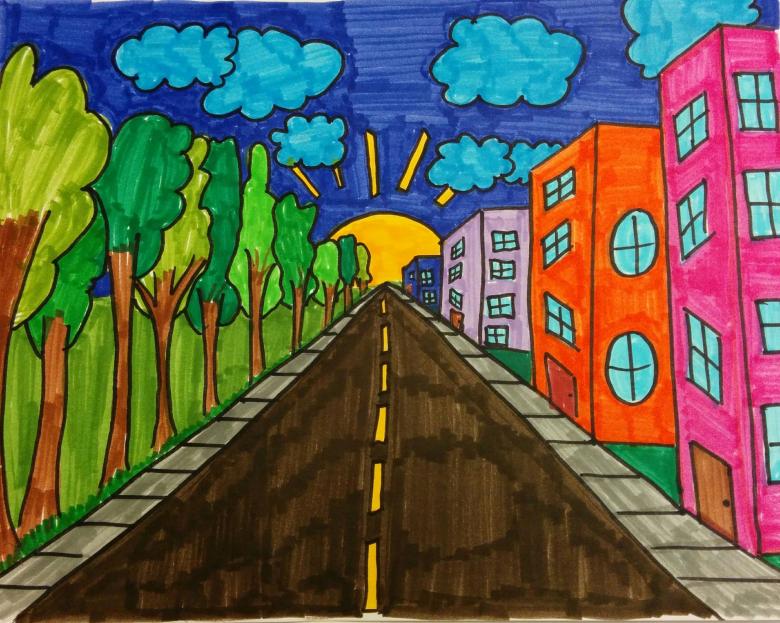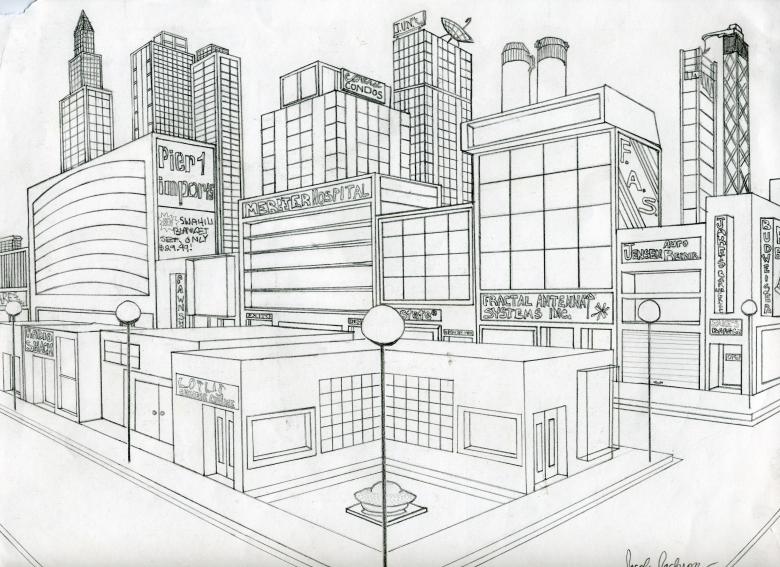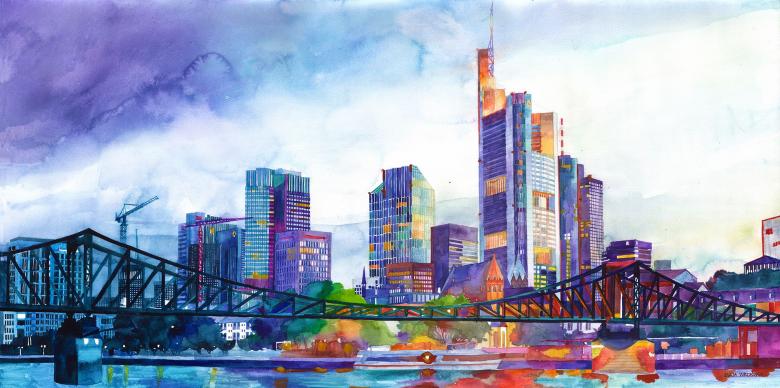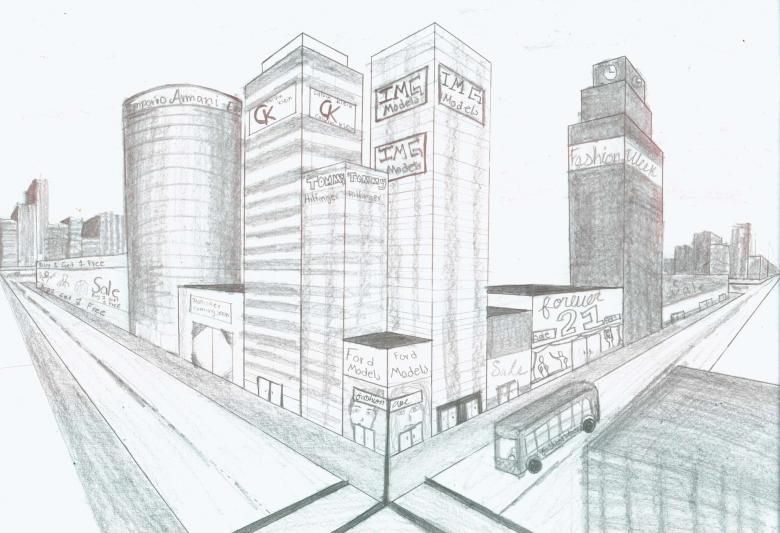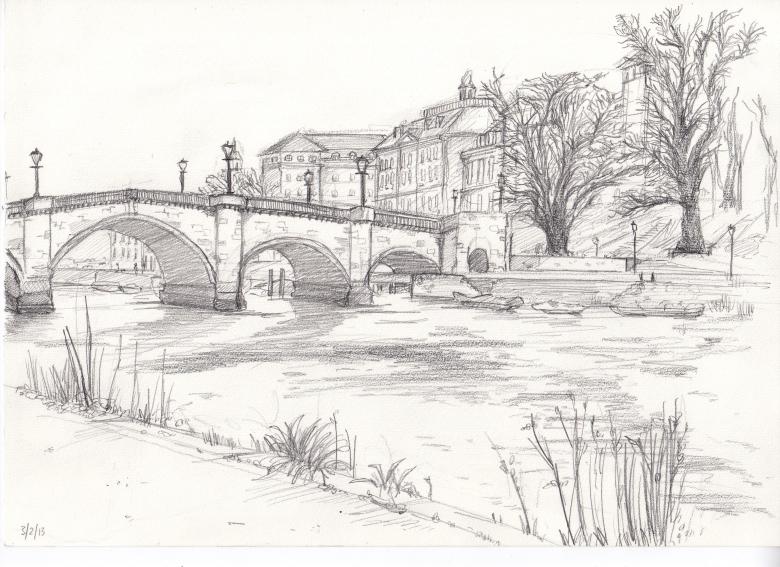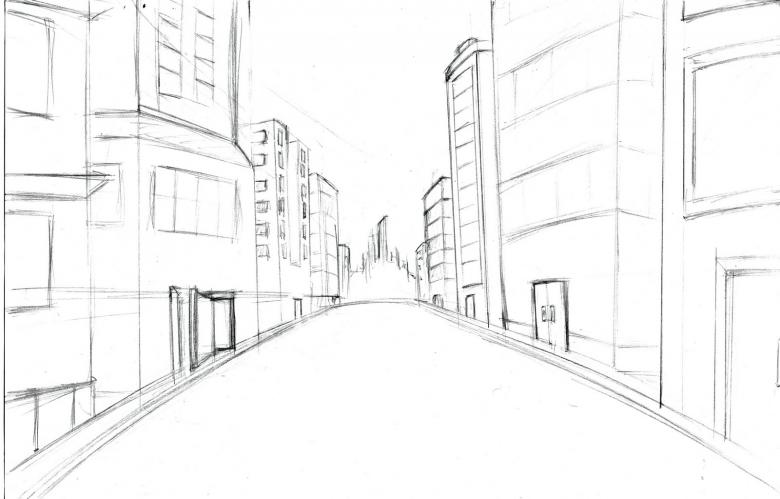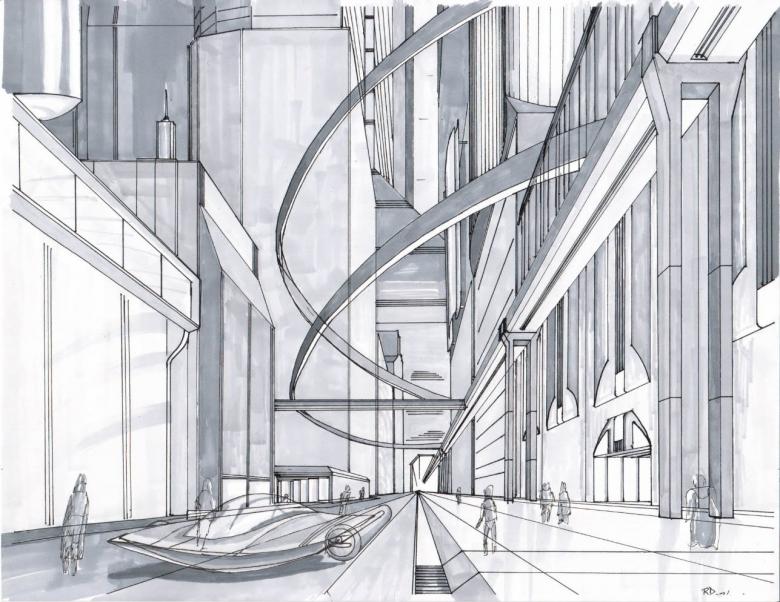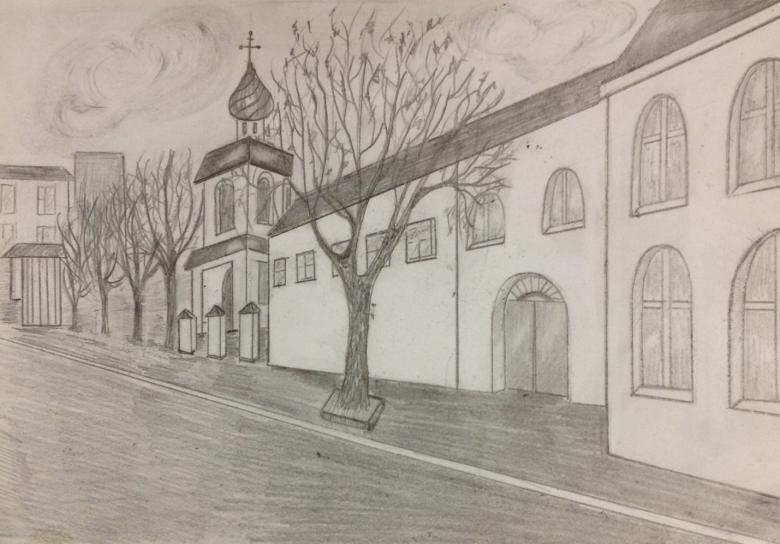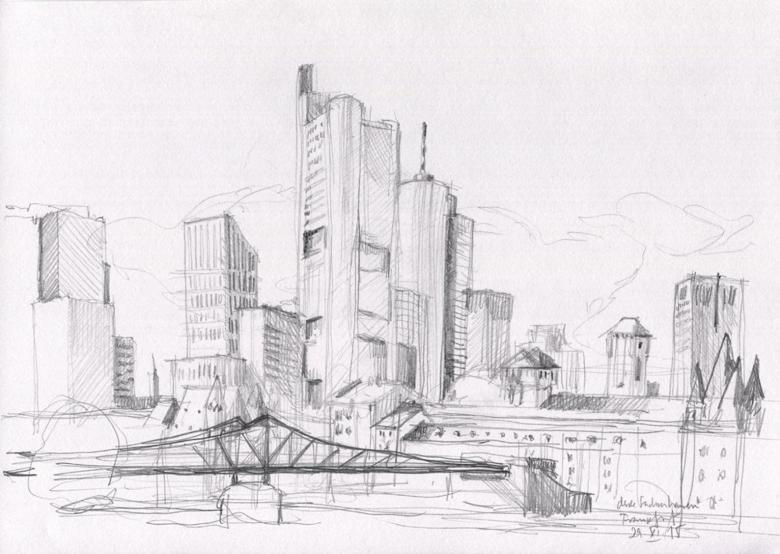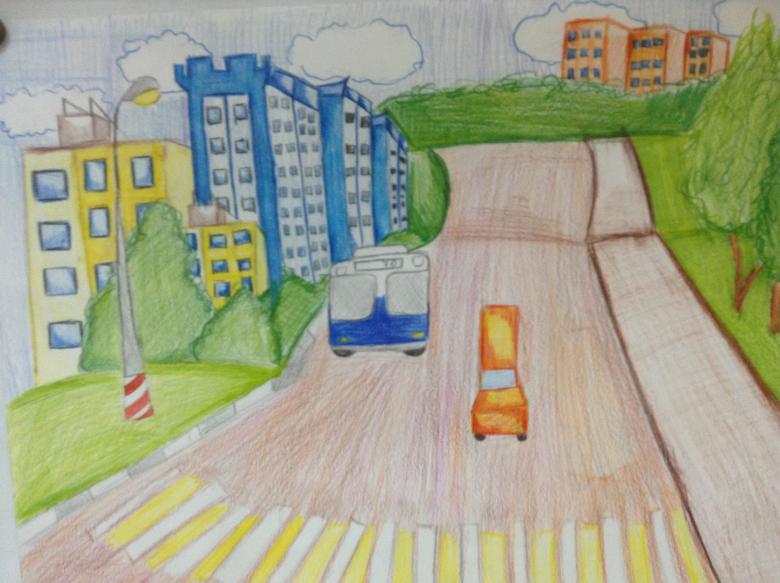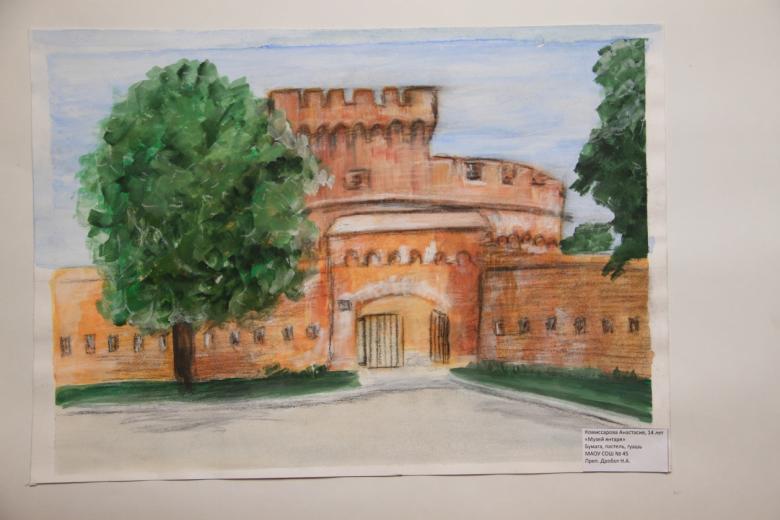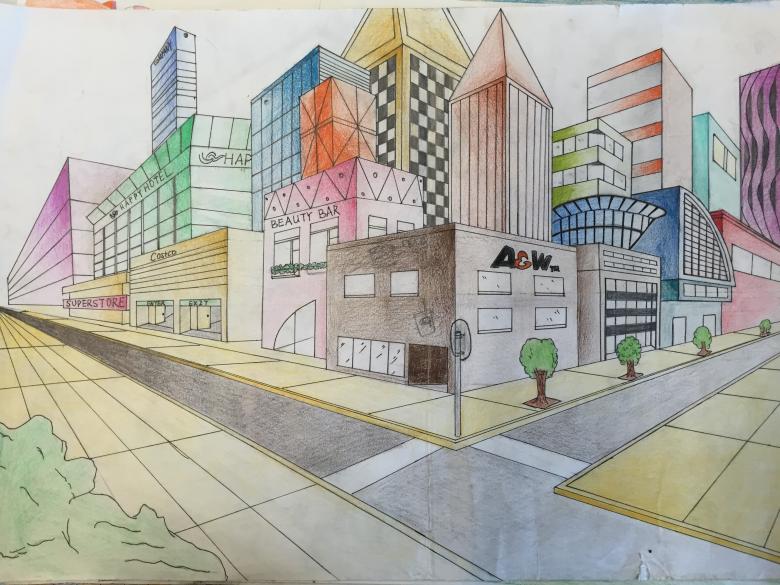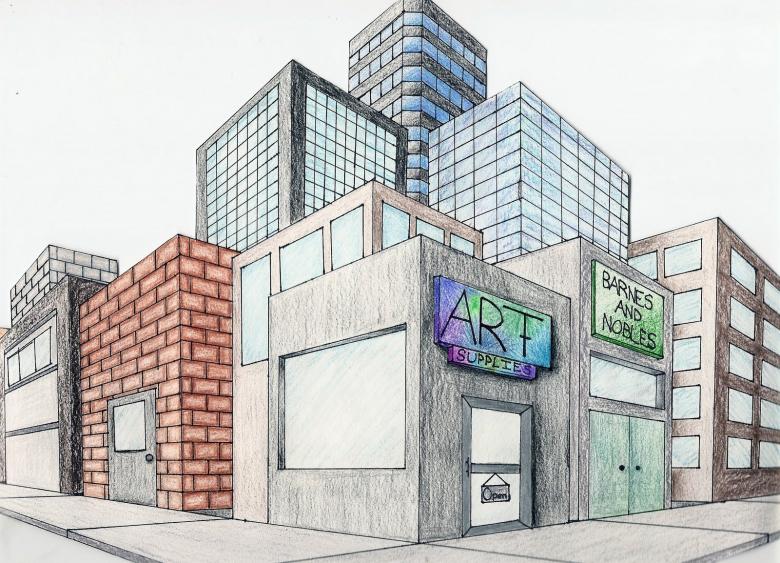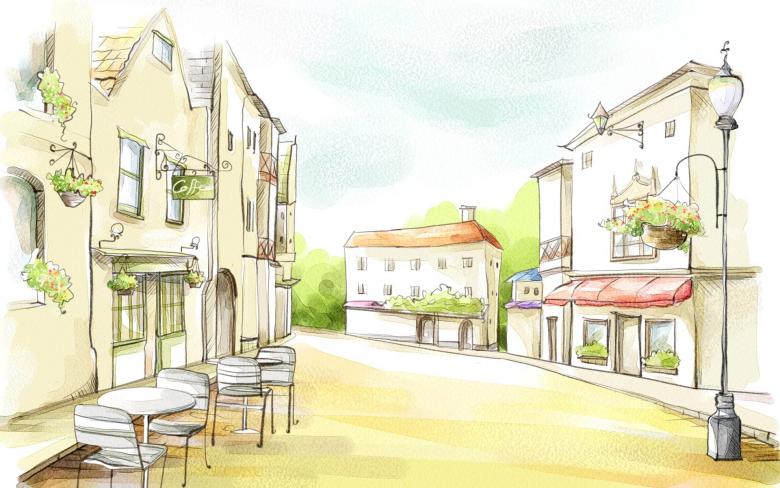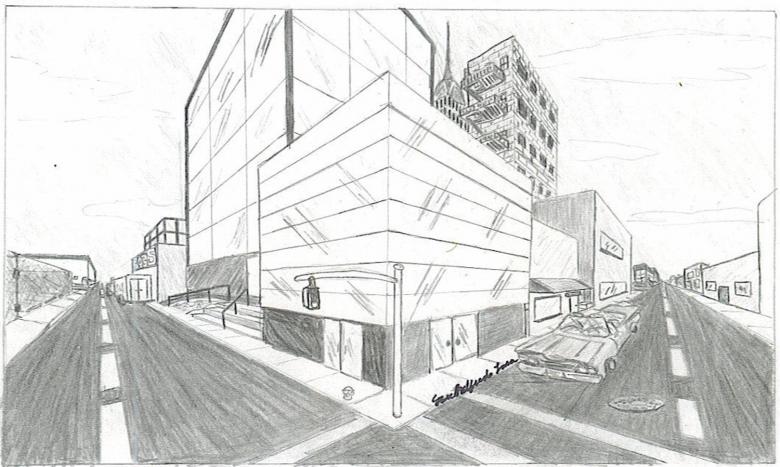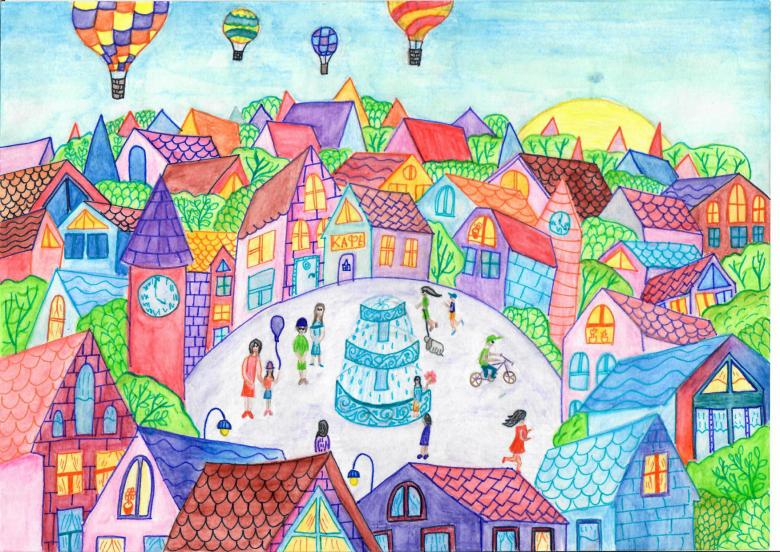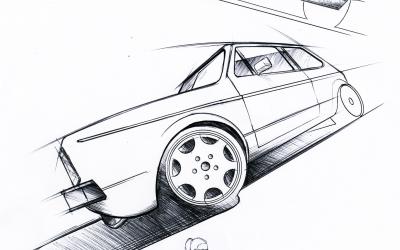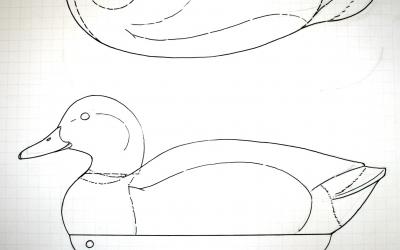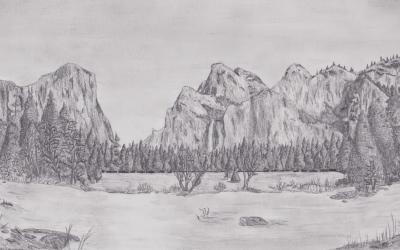How to Draw a City: Easy Master Class in City Painting (77 Photo Examples)
You can paint the cityscape at home without going out in the open air. Undoubtedly, the work with nature will give more inspiration, but to master the basic principles of creating a sketch of an ordinary street in frontal perspective is possible with a step-by-step lesson.

It is more convenient to begin the training with simple sketches.
Straight Street
This master class will help draw a straight street even for beginners.

For work it is necessary to prepare:
- paper for drawing,
- A pencil.
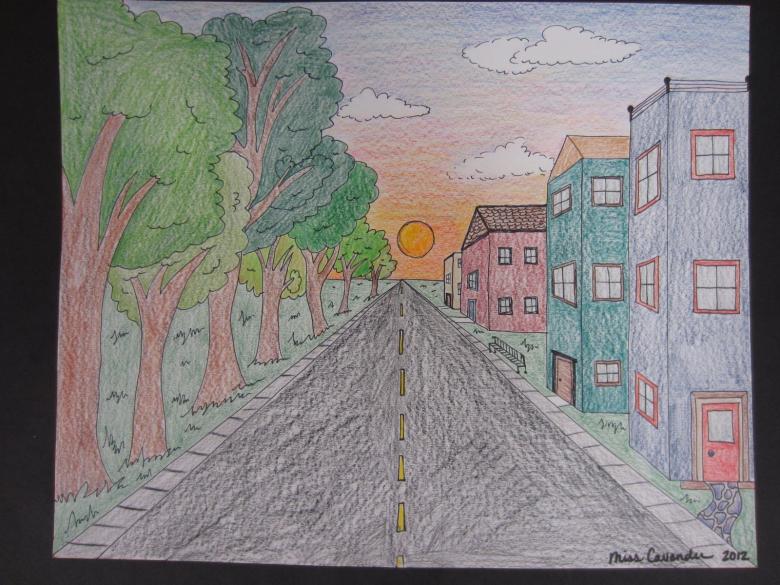
Sequence of work.
- The first thing to do is to decide on the perspective and make a rough drawing. In this case, the sketch will be in frontal perspective. The first will be a horizontal strip just below the middle of the scrapbook page.
- Mark the middle of this strip as a vanishing point.
- Draw two vertical lines parallel to the edges of the sheet.
- Draw diagonals through the vanishing point of these lines.
- Mark the facades of buildings with vertical segments.
- Side walls of the facilities perform by means of horizontals.
- From the vanishing point, draw the borders of the resulting road in the drawing. It is important to note that the width of the sidewalk gradually comes to nothing. The closer to the viewer, the wider the pedestrian and roadway.
- Mark the middle of the bottom edge of the scrapbook with two marks a short distance apart. Draw them to the vanishing point. This is the axial marking of the roadway.
- Draw the curb.
- On the facades of buildings mark the contours of windows.
- If you wish, you can "complete" one of the houses by drawing an additional line over the buildings to the vanishing point.
- To depict a vintage facade, draw two diagonals over one of the houses. Through the place of their intersection draw a line a couple of centimeters above the building, connect the top with the corners of the house. Draw the roof.
- Draw a window on this facade.
- It is more convenient to begin the image of trees growing along the sidewalk with sections going into the distance. The space between them is conventionally divided into squares. These are used for drawing the greenery, working out the branches and leaves in detail.
- It is easy to draw lanterns along the boulevard or benches following the same principle.
- An important point in creating such a pencil sketch is shading. It helps to emphasize details and give the drawing the necessary volume.
- Window openings and house walls should be slightly highlighted.
- With the help of an eraser, remove all rough markings.
- Work out the picture in detail, highlighting the poles, the crowns of trees, the shadows that fall from them on the asphalt.
- Barely noticeable shading of the roadway.
- On the sidewalk, they add shadows from the houses on one side of the street.

If you want and have certain skills, you can, by thickening the shading, depict an evening landscape, shading the glare of the streetlights on the pavement. Experienced artists can enliven the sketch by adding adults and children to the drawing.

By following these instructions, any novice artist can easily depict part of the street in frontal perspective.

Urban Crossroads
A very different picture can be obtained by making two vanishing marks on the edges of the sketch.
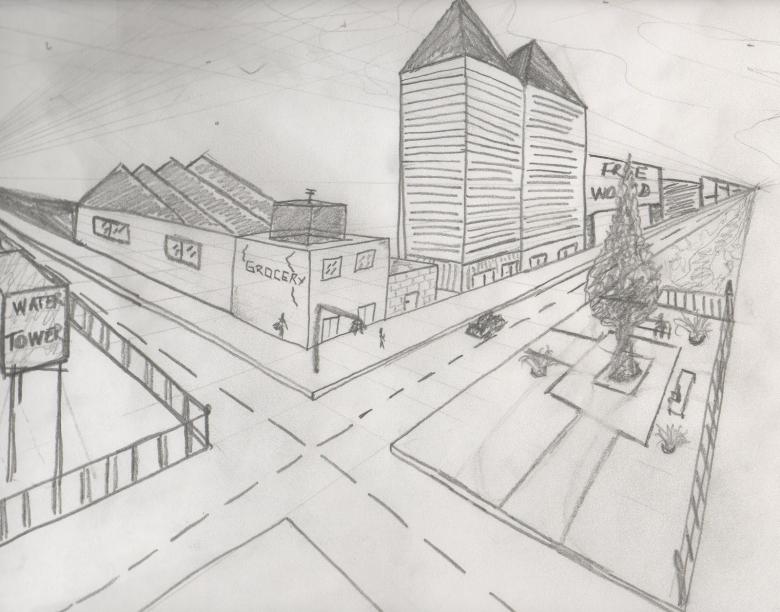
Step-by-step master class.
- On both sides of the sheet mark points in the middle.
- Mark the points in the middle of the sheet at the top and bottom, leaving a small distance from the edge.
- Connect the dots with light lines.
- Protruding corner in the middle of the sheet is the corner of the building in the foreground. It should be marked with vertical segments.
- Having stepped back a little from the first object, mark the walls of the following buildings. Their roofs will be slightly lower than in the foreground. The outlines of the roofs extend to the vanishing points.
- Objects can be depicted in different heights.
- On the facades are marked and traced architectural elements.
- Slightly departing from the foundation of the central building, mark the place of the sidewalk. Connect the mark with the vanishing points and mark the edge of the sidewalk.
- Erase unnecessary details of the markings.
- Draw the details of the building facades and hatch them.
- A darker shading to mark the side walls of buildings, creating a shadow of the neighboring buildings.
- In the distance hatching will also be slightly darker than in the foreground.
If you wish, you can add an image of trees or lanterns to the drawing. The facades of buildings can easily be supplemented with store signs.

It is possible to train to carry out preliminary marking of the sketch, having taken as a sample templates of prospectuses from children's coloring books.
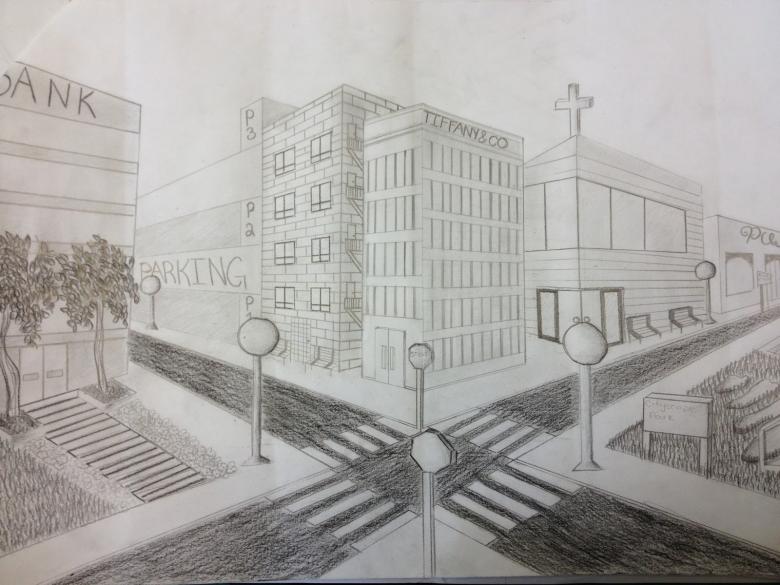
Cityscape in pencil
This version of the pencil sketch has more details, so it requires a more careful approach.

The drawing will show a city street with a slight curve and a narrow sidewalk between buildings.
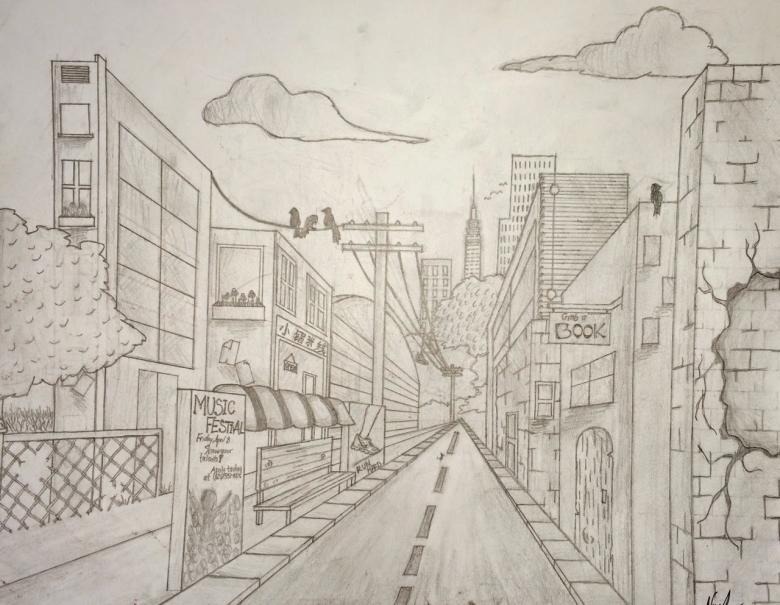
Step by step master class.
- First of all, it is necessary to draw a good marking on a sheet of paper. It is necessary to draw two horizontals above and below the middle of the sheet. Then, on the left side of the sheet to draw two lines, marking the facades of houses, going into the distance. Mark the bases of houses on the right side. Above zigzag lines indicate the roof of the corner house.
- Vertical segments outline the walls of objects, mark the doorway on the facade of one of them.
- Draw the roofs of the buildings in detail, taking into account perspective.
- Mark out the edges of the sidewalks with double segments. They can be convergent and slightly divergent. This method allows for volume in the sketch.
- To work out the roofs and outline a small canopy at the facade of the house on the right side, to indicate the entrance to the room.
- On the left side, depict a low tree.
- On the right side of the street, near the canopy, depict a couple of tables and chairs of a summer café. Decorate the entrance to the cafe and the canopy.
- Small details are very important in the pencil sketch. Therefore it is necessary to carefully represent facades of buildings, balconies, windows and doors.
- The sketch can be supplemented with the image of a person, a cat, a vase with flowers, a lamppost. Windows in buildings located at an angle to the viewer is drawn with a slight slant. Window openings in the house, which faces the viewer, are square or rectangular in shape.
- Having removed unnecessary lines, it is necessary to shade the drawing, having worked out the shadows.
Instructions can be taken as a basis and depict your own streetscape.
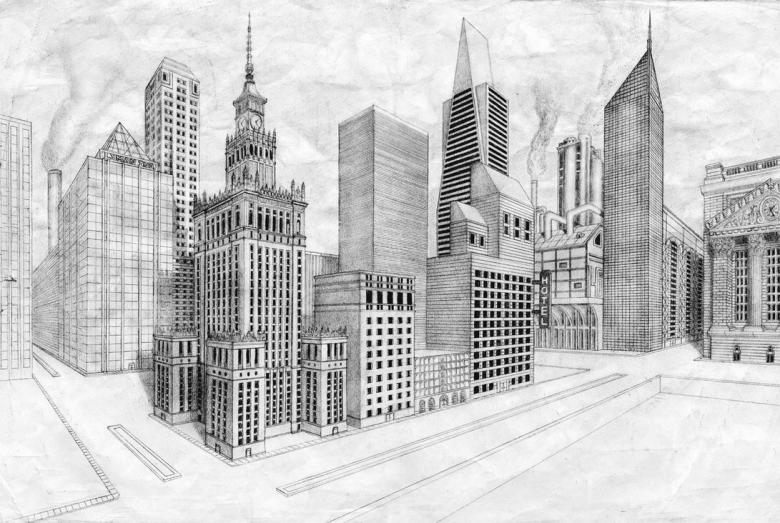
Such a drawing can be colored with pencils, paints or felt-tip pens.

Water Color Cityscape
An original watercolor sketch with a city theme can be created by adhering to a few basic rules. It is better to work on the sketch in plein air, it will help you catch the transitions of colors and the play of light and shadow deeper.

When working on a watercolor portrayal of a city it is important to know
- large objects should be drawn first, and details should be sketched after the background dries,
- light details are drawn first, then dark objects are depicted.

Step by step master class.
- Having chosen a suitable nature, first of all the largest objects are depicted on a sheet of paper: the light walls of houses and dark greenery in the background.
- To convey space, it's easy to see the play of shades: the shadows in the foreground are darker than in the distance.
- There's no need to be very thorough when working with watercolor. The image can be a little blurry.
- Doors and window openings are not difficult to mark with light strokes, just marking them.
- Leaves of trees, an umbrella of a street cafe, a child playing in the street are also not drawn in detail, but outlined with light strokes.
- Some details of the foreground can be highlighted, giving the drawing some clarity: a lamppost, a curb or a tile on the sidewalk. This will help make the sketch more expressive.
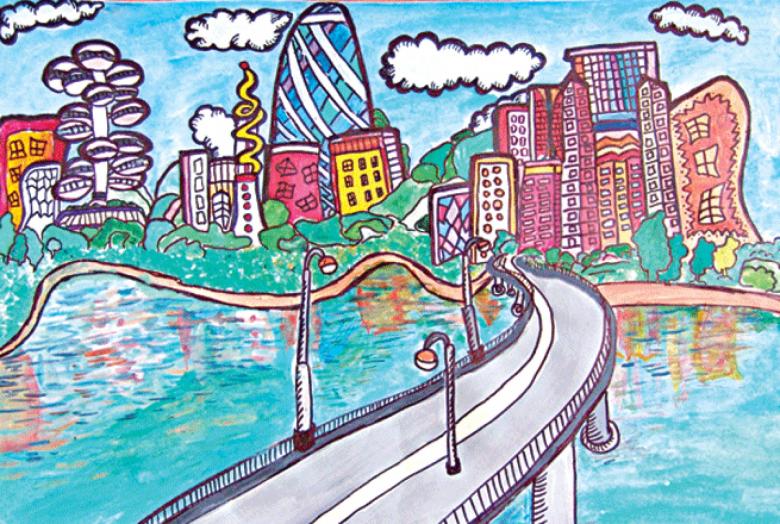
If you want, you can draw the town with a simple pencil and give it expressiveness with shading. Delicate watercolor studies are better to create directly on the street where it's easier to catch the dynamics of city life and the special atmosphere. Each corner of the city has its own special mood, which is important to convey on paper.

